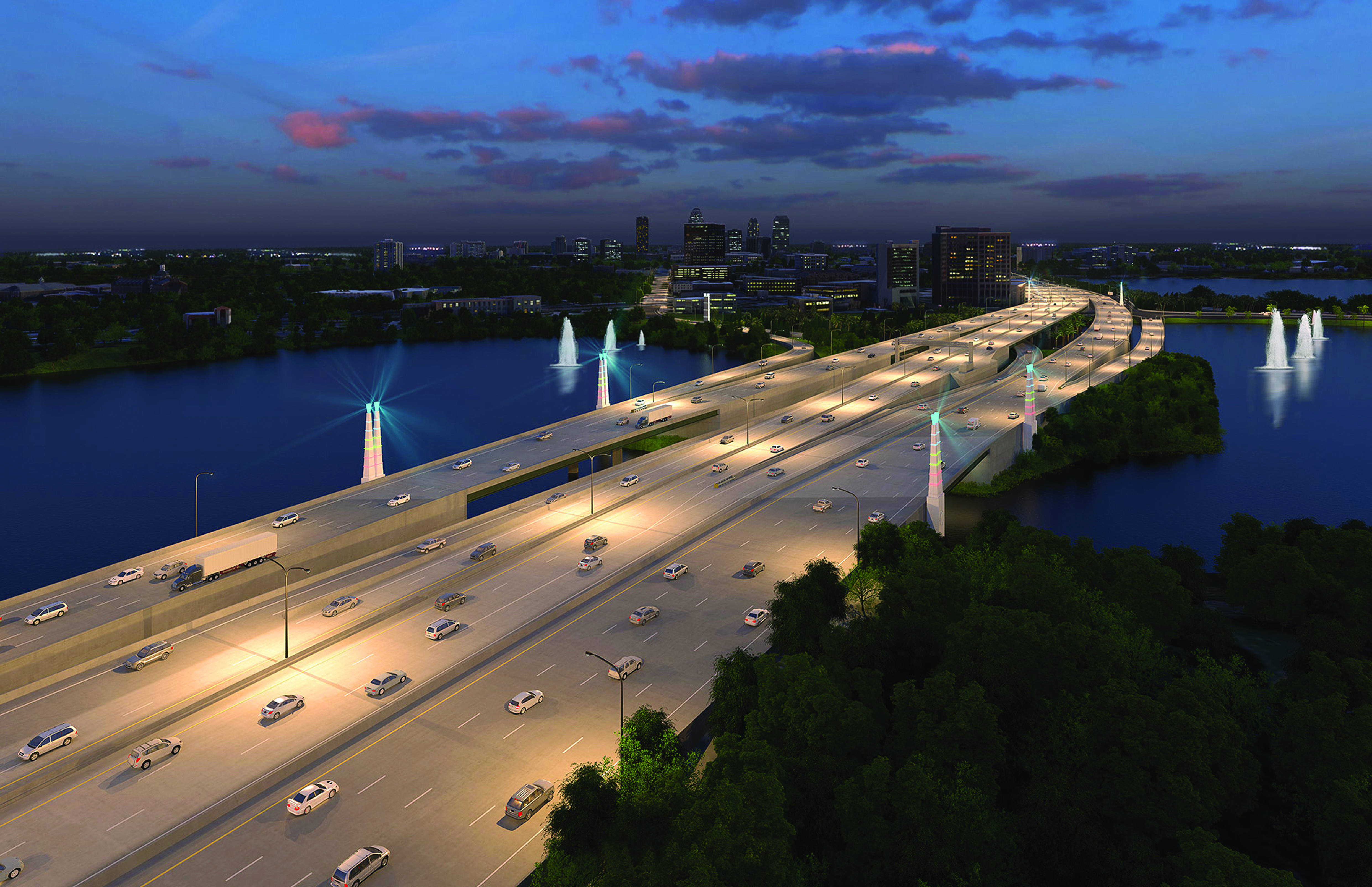
New financing models have been used to deliver key transport links in the US - * Patrick D Harder and Brandon J Davis
The opening of the I-595 and Port of Miami Tunnel projects are enormously significant and represent a shift in how public agencies in the United States are delivering transportation infrastructure. This is because FDOT delivered the projects through the first two availability payment (AP) concession agreements in the US. Both projects were completed generally on schedule and on (or under) budget. The success of these two projects, which reached financial close in the heart of a recession, can be attributed to the ingenuity and perseverance of FDOT and the projects’ concessionaires.
These projects have set precedents for the US. Based on FDOT’s success, other US public agencies have now procured AP concession agreements of their own. Specifically, the California Department of Transportation executed an AP concession agreement in January 2010 for the $1.1 billion Presidio Parkway Project and the Indiana Finance Authority executed AP concession agreements in December 2012 and April 2014 for the East End Crossing and I-69 Section 5 projects, which had capital costs of $1.2 billion and $370 million respectively. But this shift to delivering major highway projects through AP concession agreements was not always an easy road.
Prior to this recent burst of transactions delivered as AP concessions, US PPPs were delivered as toll concessions. In both AP and toll concessions, the concessionaire agrees to design, build, finance, operate and maintain a project.
However under toll concessions, the concessionaire performs these services in return for the right to collect project revenues and takes the risk of those revenues underperforming. By comparison, with an AP concession the public agency keeps project revenues (if any) and the concessionaire agrees to perform its services in return for the right to receive construction milestone payments and fixed periodic payments – known as availability payments. The concessionaire receives the availability payments from the completion of project construction to the end of the contract term – a period which generally lasts 30 years.
The amount of the availability payments is subject to downward adjustment based on the concessionaire’s performance when operating the project. For example, unpermitted lane closures or failure to provide a safe facility can lead to deductions, with larger deductions tied to infractions during peak traffic periods. Put simply, the public agency is entitled to reduce the availability payment when the facility is not “available” to the public as required.
The Port of Miami Tunnel has set several precedents as Florida has no history of constructing highway tunnels. With its flat topography, there has previously been little need for tunnelling, and underwater tunnelling in soft ground had, until recently, been viewed as too challenging technically. But the Port of Miami Tunnel has changed this perspective.
Following its completion, the twin tubes are now the largest soft ground tunnels in North America, which is even more impressive considering the porous geotechnical conditions found under Biscayne Bay.
Because the project was so challenging, there were some who considered it to be unfeasible. When the project was initially proposed in February 2006 as Florida’s first PPP highway project, there were plenty of critics. After shortlisting the three teams responding to its Request for Qualifications, FDOT commenced an industry review process designed to solicit and incorporate bidder input into the contract documents.
As the first AP concession in the US, there was no domestic precedent to rely on. As a result, FDOT elected to modify US precedent from toll concessions to incorporate certain concepts from experience in the UK and Canada with AP concessions. In the process, FDOT created new precedent documents that have since formed the basis for most of the subsequent AP concession agreements used in the US.
At the conclusion of the industry review process in November 2006, FDOT issued a Request for Proposals. The three shortlisted teams all submitted their bids in March 2007 and the results were impressive. Two of the three teams were well under FDOT’s independent cost estimate for the project, with the winning team’s construction price coming in at half of FDOT’s estimate ($610 million compared with $1.2 billion). In May 2007, FDOT announced that the Miami Access Tunnel (MAT) consortium – composed of Babcock & Brown and
FACTS
Project Name:
Port of Miami Tunnel Project (POMT)
Client:
Florida Department of Transportation’s (FDOT)
Project cost:
US$1 billion
Scope:
Two 1.28km traffic tunnels connecting Watson Island and the Port of Miami (Dodge Island) beneath Biscayne Bay in Florida. The route of the twin tunnels runs under Government Cut, the main shipping channel in Biscayne Bay.
Key excavation tool:
Herrenknecht TBM, with a 12.9m diameter cutting head and a total length of 139.3m
Key participant: Bouygues Civil Works Florida is the design-build contractor
Key challenge:
This is the largest tunnel project so far carried out in soft ground conditions in North America. Unfortunately at that point, several storms hit the project’s uncharted waters. MAT’s bid relied on private activity bonds, with Lehman Brothers providing an underwritten commitment for a wrapped bond financing. By the end of 2007, with the onset of the recession, monoline insurers were no longer able to wrap large bond offerings while retaining investment grade ratings, forcing the parties to extend the deadline to reach commercial and financial close while MAT developed alternative financing structures.
MAT ultimately submitted an application for a loan from the United States Department of Transportation (USDOT) through the Transportation Infrastructure Finance and Innovation Act (TIFIA), which required FDOT to federalise the project after receiving proposals – something never previously done. This gave the project access to low rate subordinated debt over 35 years, which is the same length as the term of the concession agreement. The project would likely have died without the USDOT’s willingness to retrospectively validate the procurement from a federal compliance perspective, making TIFIA funding available as a financing tool for MAT.
Throughout this period, commodity prices and foreign exchange rates rose in response to the Lehman crisis and fallout in the markets more broadly. This posed a challenge and made it difficult for MAT to stay within the $33.6 million annual maximum availability payment it had committed to in its proposal. In this unprecedented atmosphere, MAT’s primary equity partner, Babcock & Brown, became a recession casualty and was forced to drop out of the transaction. With prices rising and the project sponsor in trouble, FDOT put the project on official hiatus in December 2008. Many thought that the project was gone for good.
Then the skies cleared. In the spring of 2009, FDOT’s local partners – the City of Miami and Miami-Dade County - were pushing hard for the project to come back at the same time that commodity prices and foreign exchange rates were becoming more favourable. FDOT took the project off hiatus and allowed MAT to replace Babcock with
With a newly-reconstituted sponsor, full support from FDOT and local partners, and the addition of TIFIA, MAT was well positioned to pursue a bank club financing. In the end, the parties executed the concession agreement in June 2009 and MAT reached financial close on October 15th, 2009, nearly 32 months after MAT submitted its bid. With 10 commercial banks providing a $322 million five-year loan and a $22 million six-year loan, TIFIA provided a $341.5 million 35-year loan. In the end, the maximum annual availability payment was $32.5 million, delivering $2.2 million in annual savings to FDOT in real dollars from the original bid.
Meanwhile the I-595 highway project set its precedents. From a technical perspective, the Port of Miami Tunnel and the I-595 Corridor Roadway Improvement projects could not be more different. However from the financial perspective, the two have a great deal in common. The I-595 project consists of the reconstruction, widening and resurfacing of 21km of the existing I-595 route in Broward County, Florida. Central to the project is the addition of three at-grade reversible toll lanes in the median of the existing highway. While the tunnel project is technically difficult because of the porous rock under Biscayne Bay, I-595’s technical difficulties stem from the need to safely operate and maintain traffic flows along a very busy route, while completely reconstructing the highway.
FDOT issued the Request for Qualifications for I-595 in the same month the Port of Miami Tunnel was originally supposed to reach financial close – October 2007, just as the recession was getting underway. FDOT shortlisted four teams for the project in December 2007. In September 2008 two teams submitted proposals in response to the project’s Request for Proposals. Both remaining teams changed their composition during the evaluation process however.
FDOT selected the I-595 Express team in October 2008 and the parties started the process to reach commercial and financial close. Shortly into this process, the I-595 Express team concluded that the bond financing it contemplated in its proposal would not work due to the collapse of the bond market and the collateral damage to monoline insurers caused by the recession, and so it shifted to a bank financing structure.
To facilitate this change, FDOT provided some protection from interest rate movements and a risk-sharing mechanism for credit spread movements, which proved to be critical to helping the deal move forward at the height of the recession.
With both sides working together, the parties reached commercial and financial close on March 4th 2009 – roughly four months after selection. The financing package for the project included a group of 12 banks providing a $525 million nine-year loan and a $255 million 10-year loan, with TIFIA providing a $678 million 35-year loan.
Though the Port of Miami Tunnel concession agreement hit the market first, the importance of I-595 cannot be understated. First and foremost, I-595 showed the US market that a properly structured project – even a $1.8 billion deal – can be financed in a very tough financial market. In addition, the ability to reach financial close on I-595 played a significant role in finally bringing Port of Miami to a successful, though long-delayed, financial close.
Based on the success of the Port of Miami and I-595 projects, FDOT reached financial close on the I-4 Ultimate project, which is a $2.3 billion reconstruction and widening of 34km of Interstate 4 in Orange and Seminole Counties. The largest AP concession in the US to date, the project is highly complex as it includes 15 major interchanges, 45 new bridges and 71 bridge replacements, as well as the addition of four tolled express lanes. However, unlike the Port of Miami and I-595, which are 35-year concession agreements, I-4 has a 40-year term. Financing for the I-4 Ultimate project included six banks providing a nine-year $483 million loan and TIFIA providing a $949 million loan ($130 million due in nine years and the remaining $818 million due in 38 years). The TIFIA loan is the largest loan ever under the TIFIA program for a PPP project. With the successful close of the I-4 Ultimate project, FDOT has entered into over $5 billion in AP concession agreements.
Looking to the future, AP concessions have considerable potential for funding transportation projects. The AP mechanism has worked well so far for the Port of Miami Tunnel and I-595. FDOT has paid hundreds of millions of dollars in construction milestone payments and the transition to the operating phase and the availability payment regime has gone smoothly. What remains is FDOT’s implementation of the AP mechanism and FDOT and others learning from these experiences and applying what they learn on future transactions.






